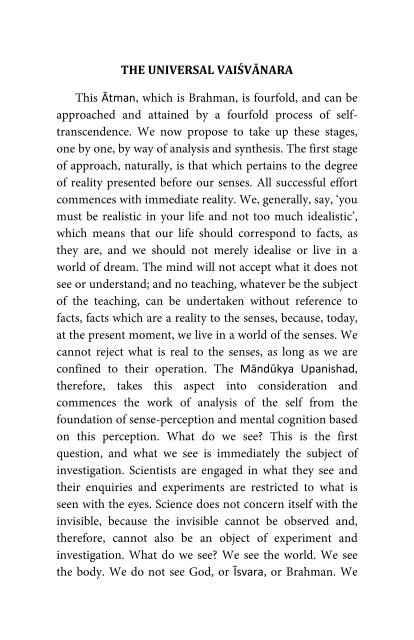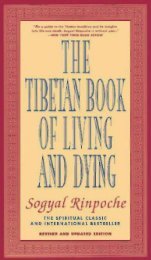Mandukya_Upanishad
Mandukya_Upanishad
Mandukya_Upanishad
You also want an ePaper? Increase the reach of your titles
YUMPU automatically turns print PDFs into web optimized ePapers that Google loves.
THE UNIVERSAL VAIŚVĀNARAThis Ātman, which is Brahman, is fourfold, and can beapproached and attained by a fourfold process of selftranscendence.We now propose to take up these stages,one by one, by way of analysis and synthesis. The first stageof approach, naturally, is that which pertains to the degreeof reality presented before our senses. All successful effortcommences with immediate reality. We, generally, say, ‘youmust be realistic in your life and not too much idealistic’,which means that our life should correspond to facts, asthey are, and we should not merely idealise or live in aworld of dream. The mind will not accept what it does notsee or understand; and no teaching, whatever be the subjectof the teaching, can be undertaken without reference tofacts, facts which are a reality to the senses, because, today,at the present moment, we live in a world of the senses. Wecannot reject what is real to the senses, as long as we areconfined to their operation. The Māndūkya <strong>Upanishad</strong>,therefore, takes this aspect into consideration andcommences the work of analysis of the self from thefoundation of sense-perception and mental cognition basedon this perception. What do we see? This is the firstquestion, and what we see is immediately the subject ofinvestigation. Scientists are engaged in what they see andtheir enquiries and experiments are restricted to what isseen with the eyes. Science does not concern itself with theinvisible, because the invisible cannot be observed and,therefore, cannot also be an object of experiment andinvestigation. What do we see? We see the world. We seethe body. We do not see God, or Īsvara, or Brahman. We



